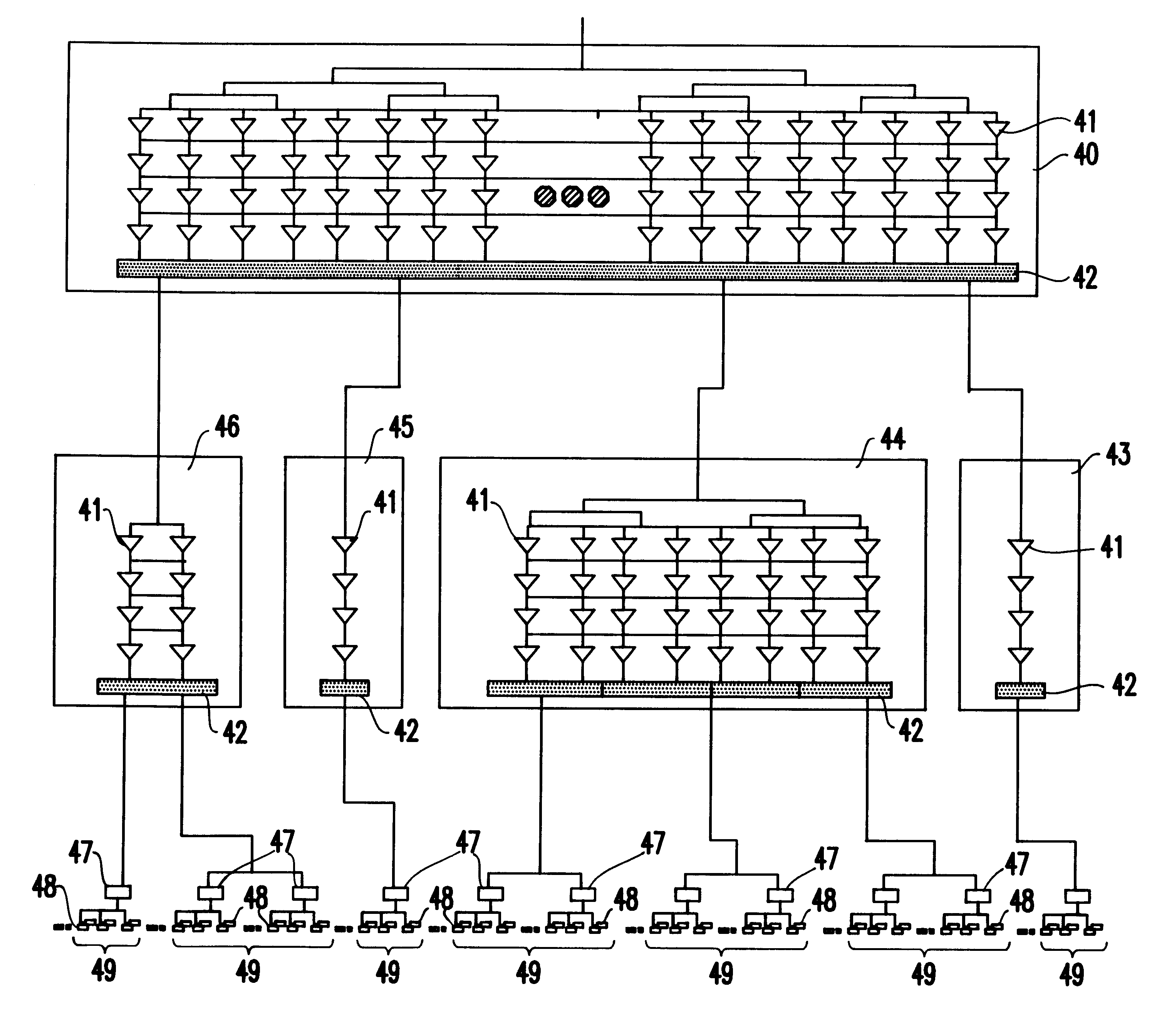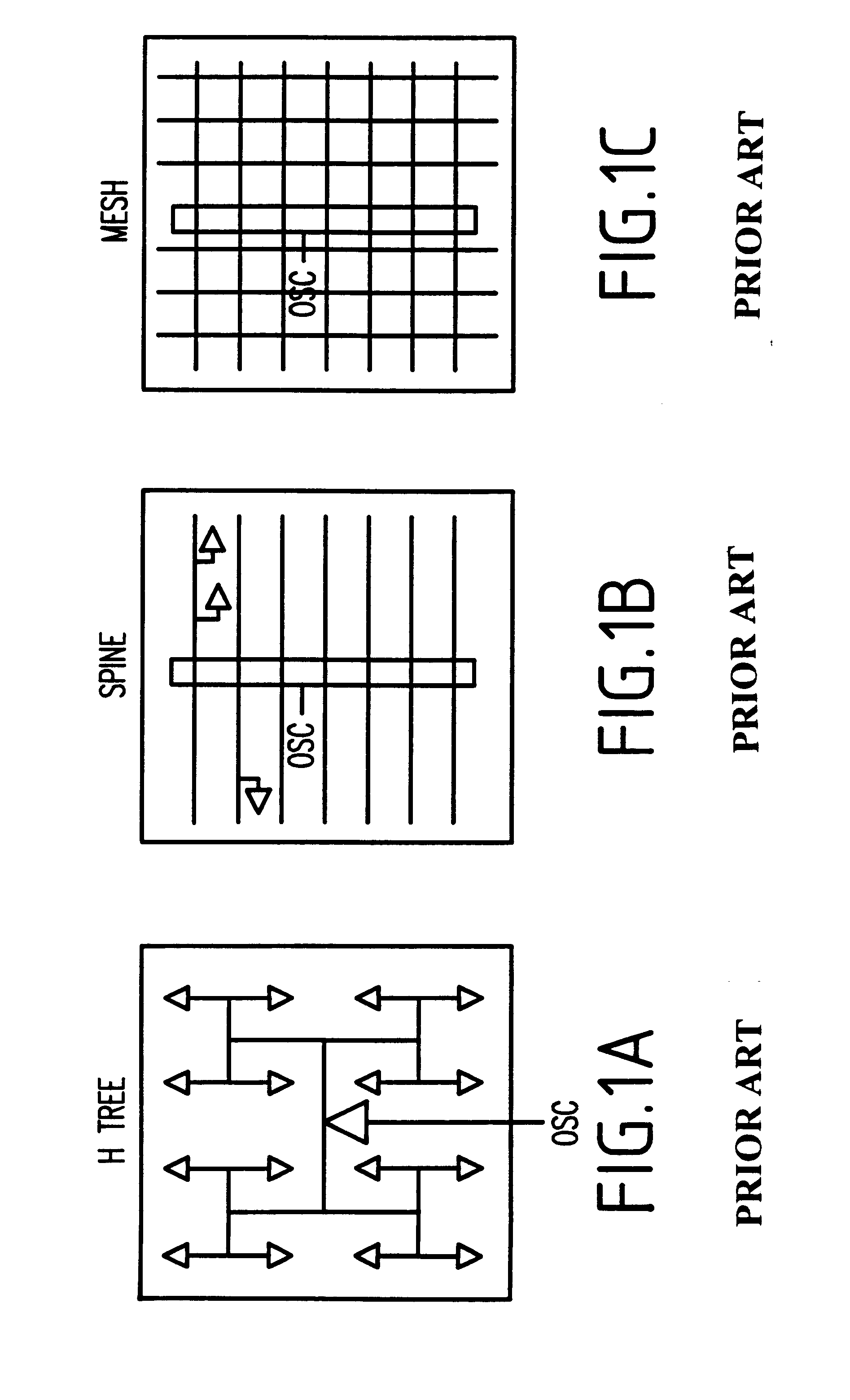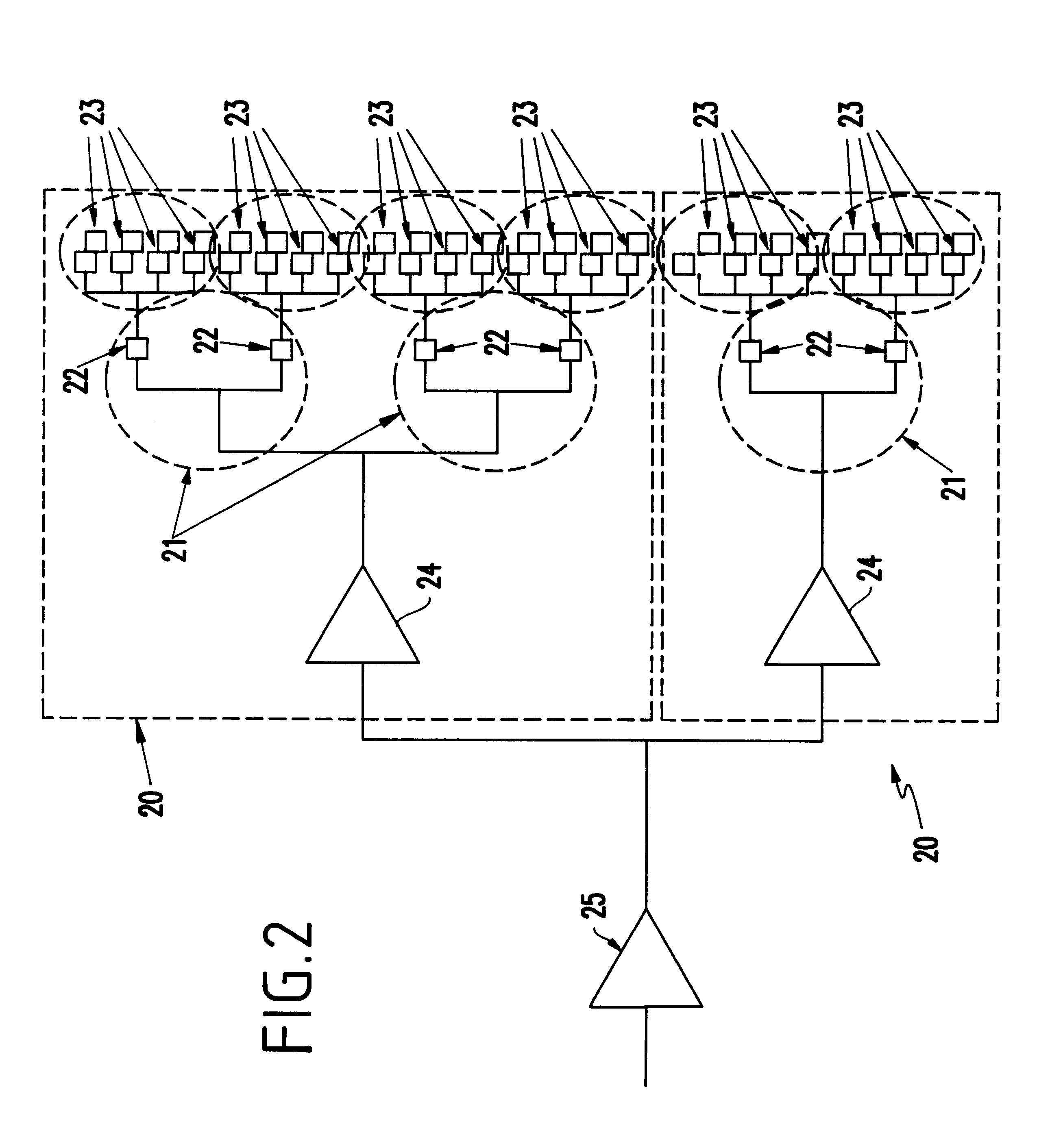Method and apparatus for routing low-skew clock networks
a low-skew clock and network technology, applied in the direction of generating/distributing signals, pulse techniques, instruments, etc., can solve the problems of increasing power requirements, reducing wireability, and increasing wire and capacitance,
- Summary
- Abstract
- Description
- Claims
- Application Information
AI Technical Summary
Problems solved by technology
Method used
Image
Examples
Embodiment Construction
Application specific integrated circuits (ASICs) are generally produced in smaller numbers when compared to standardized integrated circuits because of their application specific nature. Thus, the design cost per unit produced is higher for ASICs than for more standardized integrated circuits.
The design of the clock distribution networks for ASICs contributes a large amount to this design cost. Traditionally, designers of ASIC products have preferred distributed clock trees because of their flexibility. More specifically, the flexibility afforded by clock distribution trees reduces the design time and the accompanying design cost of ASICs.
However, as mentioned above, distributed clock trees present the designer with the disadvantages associated with a large number of stages which causes increased clock skew due to process variation and increased latency. Therefore, conventional clock network design presented a tradeoff between design cost and circuit complexity / performance. Often, b...
PUM
 Login to View More
Login to View More Abstract
Description
Claims
Application Information
 Login to View More
Login to View More - R&D
- Intellectual Property
- Life Sciences
- Materials
- Tech Scout
- Unparalleled Data Quality
- Higher Quality Content
- 60% Fewer Hallucinations
Browse by: Latest US Patents, China's latest patents, Technical Efficacy Thesaurus, Application Domain, Technology Topic, Popular Technical Reports.
© 2025 PatSnap. All rights reserved.Legal|Privacy policy|Modern Slavery Act Transparency Statement|Sitemap|About US| Contact US: help@patsnap.com



